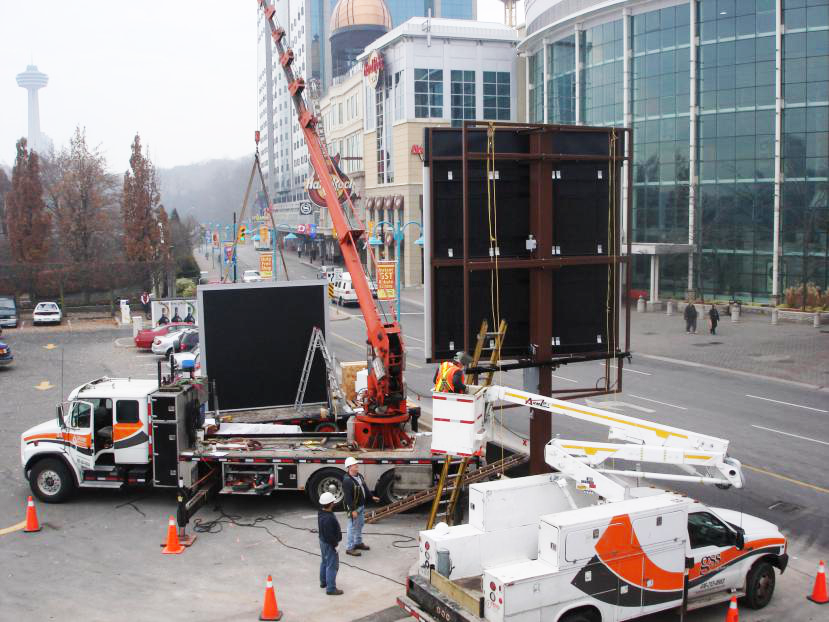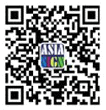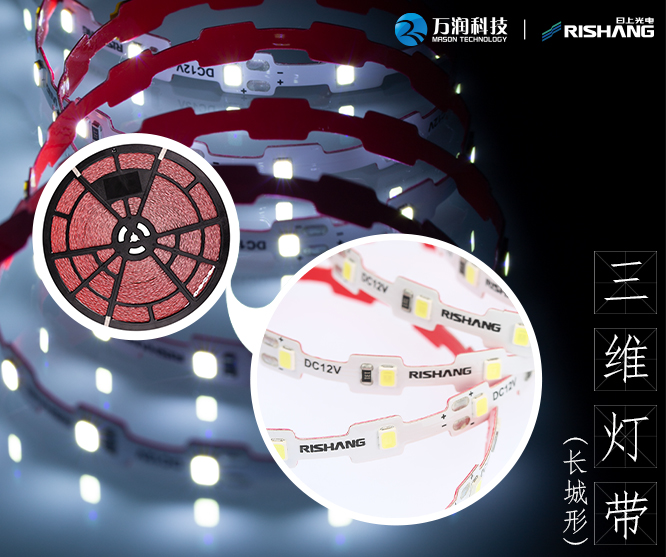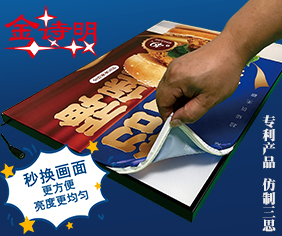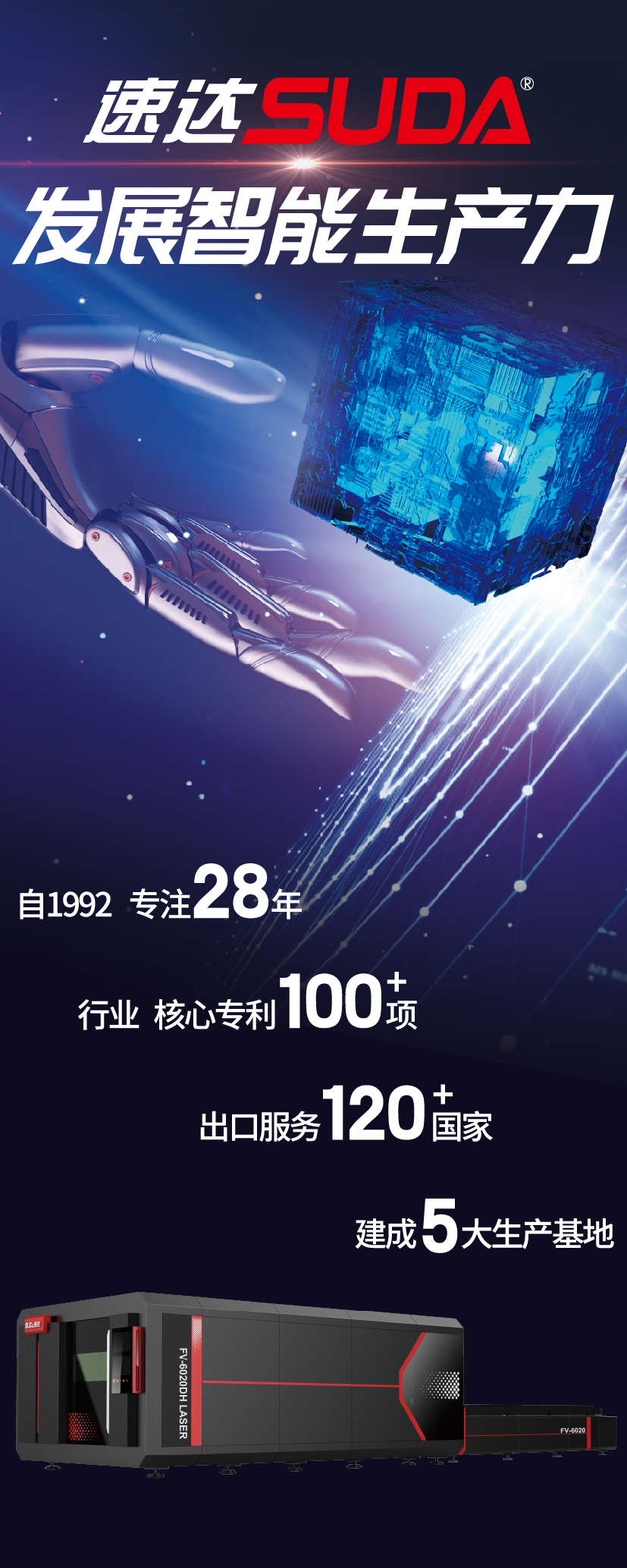
Sign installation work requires the proper training, equipment and procedures. When followed and used correctly, these factors combine to create a safe and efficient work environment.
在标识的安装工作中,安装人员需要适当的对设备和程序进行基本的培训,遵循程序并正确使用时,将所有应用结合起来,才能创造一个安全和有效的工作环境。
Some of the key safety precautions for sign installers may seem obvious at first glance, yet these are exactly the requirements that are needed to prevent the most common types of occupational accidents and employer liability. So, even well-known safety rules are not always put in practice.
这么说来,标识安装人员所需要掌握一些关键性安全预防措施非常重要,尤其是防止最常见类型的职业事故和雇主责任所需的要求。所以,即便是众所周知的安全规则,也需要付诸实践,防患于未然。
On-the-job training is certainly valuable, but formal safety training is truly essential. Without formal training, sign installers who have learned strictly by watching others at work are often left unaware of certain crucial safety requirements. And since the work they perform encompasses a variety of trades, it is essential for them to have broad-based training.
那么,在职培训无疑是一件有价值的事情,正式的安全培训非常重要。如果没有接受过正式的培训,那么未通过严格监视工作中的其他人员在进行安装工作时,通常不会意识到某些重要的安全要求。由于他们所从事的工作涵盖面广泛,因此,必须进行全面的培训。
Proper equipment
设备的安全防患
The heights involved in sign installation work make fall-protection equipment essential. Occupational safety rules call for the use of personal protective equipment (PPE) in a variety of forms.
标识的安装工作涉及高度坠落,高度坠落防护设备的措施至关重要。职业安全规则要求以各种形式来使用个人防护装备(PPE)。
Safety harnesses, which are designed to prevent injury in the event of a fall, are a key requirement in terms of PPE. Each worker should have his/her own harness, properly adjusted for individual use. Although employers provide this equipment, each worker is responsible for maintaining it in good condition and reporting whenever a safety harness is damaged and needs to be taken out of use.
用于防止跌倒时受伤的安全带是PPE的关键要求,每名安装人员应该有自己的安全带,并根据个人使用进行适当调整。尽管雇主提供了这种设备,但每位工作人员都有责任保持良好状态,并在安全带损坏或需要停用时进行报告。
Other types of PPE required by occupational safety regulations include goggles and face masks, which are important safety gear for sign installations that involve torch-based cutting, welding, drilling and hammering. Welding masks incorporate special dark-tinted lenses to prevent serious eye injury, which could otherwise be caused by exposure to welding arcs.
职业安全规定所要求的其他类型的个人防护装备包括护目镜和面罩,这些装备是用于割炬、焊接、钻孔和锤击标牌安装过程中的重要安全装备。焊接面罩包含特殊的深色透镜,以防止暴露于焊接电弧造成严重的眼睛受伤。

As sign installation work entails overhead hazards, hard hats should always be worn on the job by sign installers. When one installer is working in an aerial bucket and another is standing on the ground below, for example, there is a potential hazard in the event that tools or other items are accidentally dropped from above.
由于标识的安装工作中头部容易收到危险,安装人员应始终穿戴安全帽。例如,当一个安装人员在空中进行铲斗工作,另一个安装人员在下面的地面上工作时,工具或其他物品从上方意外掉落,则存在潜在危险。
It is also important to wear ear protection when operating noisy power tools, such as rotary hammers, concrete saws, circular saws and pavement breakers. Otherwise, a sign installer’s hearing can be damaged by noise levels above a safe level.
在操作嘈杂的电动工具时,涉及旋转锤、混凝土锯、圆锯和路面破碎机,佩戴护耳罩也很重要,否则,标识安装人员的听力可能会因安全水平以上的噪音水平而受损。
Just as seatbelts have been shown to reduce the number of automobile injuries and fatalities, so too does PPE make on-the-job accidents less likely for sign installers.
安全带已被证明可以减少受伤和死亡,个人防护装备也能减少标识安装人员发生在职事故。
Electricity and cranes
电力和起重机
Overhead electrical power lines represent one of the most serious hazards for sign installers. In fact, the top cause of fatalities for workers who use cranes is when the equipment accidentally comes into contact with a power line.
架空电力线是标识安装人员所面临的最严重危害之一,事实上,使用起重机的安装人员死亡的首要原因是设备偶然与电力线接触。
The following are some examples of occupational safety rules to be followed when installers are working in proximity to these lines.
以下是安装人员应遵循的职业安全规则:
1.Confirm with the power company the line has been de-energized and is visibly grounded at the work site.
确认电力公司线路已断电,并在工作现场明显接地。
2.Ensure no crane, load line or load hoisted by the crane comes within 6 m (20 ft) of the power line.
确保起重机吊起的负载在电源线的6米(20英尺)范围内。
3.Follow clearances based on the power line’s voltage. For example, 50-kV lines require a minimum clearance distance of 3 m (10 ft), while those exceeding 250 kV require a minimum clearance of 6 m (20 ft).
根据电源线电压检查间隙。例如,50千伏线路需要3米(10英尺)的最小间隙距离,而超过250千伏线路的线路要求最小间距为6米(20英尺)。
An additional option occasionally used by sign installers is known as ‘booting.’ This method involves contacting the power company to dispatch a service crew to cover the lines with special insulating sleeves or ‘boots.’ While it represents an extra safety precaution, however, it does not relieve sign installers of their responsibility to observe one of the three options above.
标识安装人员偶尔使用的附加选项称为“启动项”,包括使用特殊的绝缘套管来覆盖这些线路,尽管这些是额外的安全预防措施,但它并不免除标识安装人员有责任遵守上述三个选项。
The precaution of booting is commonly implemented when a sign is to be installed close enough to the overhead power lines that the movements of the crane or load could encroach upon the minimum safe clearance limit. There is a cost for this service, which project managers should include when preparing their bids.
启动预防措施通常是标识安装在距离架空电力线足够近的地方,以使起重机或负载的运动可能侵入最小安全限值时实施。这项措施需要物质投入,项目经理在准备投标时,就应该包括投资这项措施与服务。
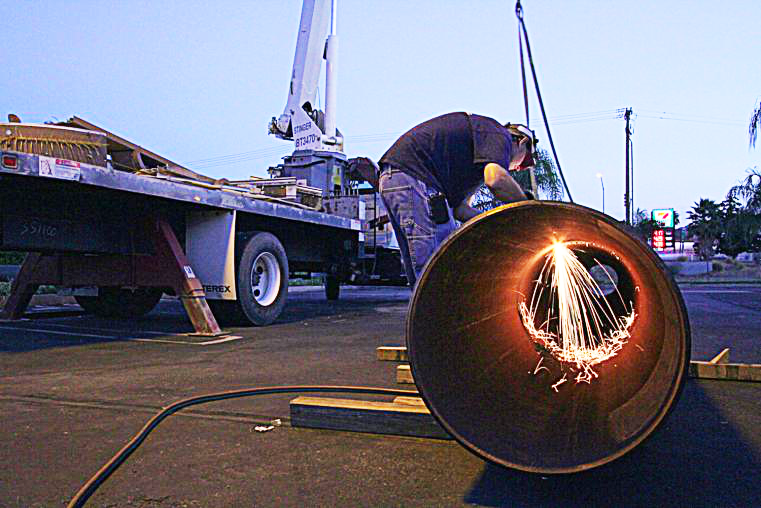
Underground utility lines can also present hazards. It is important to locate these lines and obtain clearance from the utility company before beginning any excavation work for the installation of a sign. Otherwise, workers could strike a power line while excavating and be electrocuted or could damage a gas line and cause an explosion. And besides such serious and personal hazards, even minor damage to any type of utility line is going to be very costly to repair.
此外,地下公用设施线路也存在危险。在开始任何标识安装的挖掘工作之前,找到这些生产线,并获得公用事业公司的许可是非常重要的。否则,安装人员可能在挖掘时触电,也有可能损坏煤气管道并引发爆炸。除了这些严重的人身危害之外,对任何类型公用事业线路造成轻微损坏所产生的维修费用也非常昂贵。
Getting back to working with cranes, the second leading cause of fatalities is when a worker is struck during a crane’s movement of the load. Before moving any load, crane operators, riggers and other ground personnel should always scan a 360-degree circle to ensure no hazards exist.
在使用起重机工作的过程中,安装人员在移动过程中也容易受到撞击。在移动任何负载之前,起重机操作员、装配工和其他地面工作人员应始终扫描360度以确保不存在危险。
Workers on the ground should never stand directly beneath a suspended load and taglines should be used to control the load whenever it is being hoisted. The taglines enable workers to accomplish this without standing too close to the ‘drop zone’—i.e. the area where a load would fall in the event of operator error or equipment failure.
地面上的工作人员不应该站在悬挂货物的正下方,而是让标语牌来控制负载,在操作员出现错误或设备故障的情况下负载下降的区域,使工作人员能够完成任务,而不必让安装人员站在“放置区域”的附近。
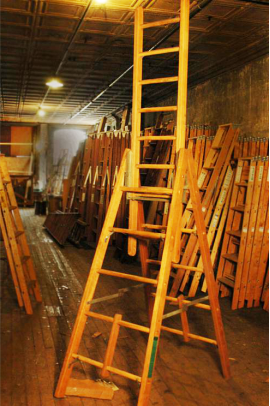
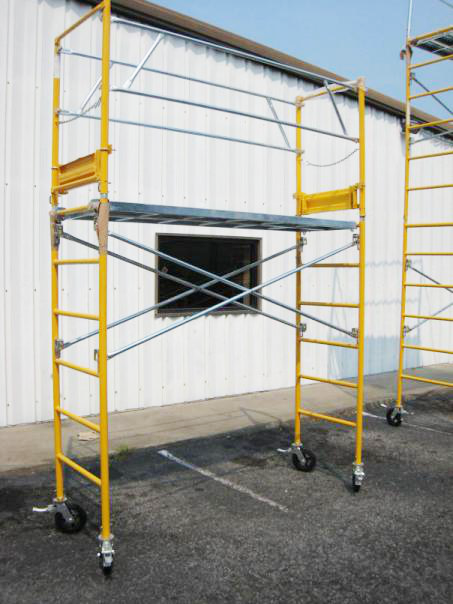
Ladders
梯子
Sign installers use ladders on a daily basis, ranging from step ladders to extension ladders to extension trestle ladders (also known as ‘A-ladders’). Unfortunately, because ladders are such commonly used equipment, it is often assumed everyone knows the proper ways to use them. The substantial number of ladder-related incidents seen in the sign industry, however, indicates this assumption is not valid.
标识安装人员每天都会使用梯子,从梯级梯子到延伸梯子、延伸栈桥梯子(也称为“梯子”)。 即便梯子是常用的工具,每个人都知道使用它们的正确方法,但是在标识行业出现与梯子有关的大量安全事件表明,安装人员并没有正确的使用。
There are a few useful rules of thumb when positioning an extension ladder. The distance from the base of the ladder to the wall, for example, should equal approximately 25 per cent of the total ladder length. So, if a ladder is extended to a length of 12 m (40 ft), then its base-to-wall distance should be about 3 m (10 ft). If the ladder is placed at too high of an angle (i.e. the base is too close to the wall), it can end up tipping over if the worker shifts his/her weight backwards from the wall.
在定位扩展梯时,通常有几条有用的经验规则。例如,从梯子底部到墙壁的距离应该约等于总梯子长度的25%,如果梯子延伸至12米(40英尺)的长度,则其基座与墙壁之间的距离应为3米(10英尺),如果梯子的放置角度太高(即基座太靠近墙壁),工人将体重从墙壁向后稍微移动,它可能就会翻倒。
The following are some more tips for ladder safety:
除此之外,还有更多关于梯子安全的提示,例如:
Inspect ladders for any damage/defects prior to use.
在使用前,检查梯子是否有任何损坏或缺陷。
Ensure all ladders are stable and on solid ground. Never set up a ladder where it can be jarred or knocked over (e.g. close to a curb or in front of an unlocked or unguarded door).
确保所有梯子稳固地面,切勿将梯子放置在可能会震动或撞倒的地方(例如靠近路缘,或位于未锁或无防盗的门前)。
Do not use a ladder outdoors in windy conditions.
在有风的条件下,请勿在室外使用梯子。
Follow all of the manufacturer’s recommendations, including those regarding weight ratings, safety labels and the highest level at which it is safe to stand.
遵守制造商的所有建议,包括有关重量等级、安全标签,以及可以安全放置的最高级别。
When using a ladder to access a roof area, the end of the ladder should extend at least 0.9 m (3 ft) higher than the roof edge.
当使用梯子进入屋顶区域时,梯子的末端应延伸至少比屋顶边缘高0.9米(3英尺)。
For further safety, secure the top, bottom or both ends of the extension ladder with adequate ties (e.g. rope) to prevent the ladder from sliding laterally.
为了进一步的安全,请用足够的连接(例如绳索)固定伸缩梯顶部、底部或两端,以防止梯子侧向滑动。
Never climb a ladder while wearing wet, muddy shoes. Make sure ladder rungs are not slippery.
穿着潮湿泥泞的鞋子时不要爬梯子,确保梯子横档不滑。
Keep your hands free of tools and materials while climbing. Use a tool belt or attach a rope to a tool bucket and pull it up after the climb.
攀爬时,请勿使用工具和材料。使用工具带或将绳子连接到工具桶,并在攀爬后将其拉起。
Never try to adjust or move a ladder while standing on it.
请勿站立时调整或移动梯子
Only let one person use a ladder at a time.
一次只允许一个人使用梯子。
If a ladder is found to be damaged in any way, ‘red tag’ it immediately and then either repair or destroy it.
如果发现梯子有任何损坏,请立即“红色标记”,然后修理或销毁。
Scaffolding
脚手架
Scaffolds also require caution. Their use is subject to many of the same safety rules as ladders.
由于脚手架的使用受制于许多安全规则,使用也需要谨慎。
Level ground is important and the manufacturer’s maximum weight limits should always be followed. It is important to note scaffolds are not designed to support signs or other heavy objects; they are intended to support only the workers and their tools.
首先,水平地面这一条件很重要,应始终遵守制造商提供的的最大重量限制。重要的是,要注意脚手架不是用来支撑标识或其他重物的。
When erecting a scaffold, all required braces must be installed on each section before adding the next section above. Likewise, when disassembling a scaffold, it is important not to remove any side braces from the lower sections until the sections above have already been removed.
在架设脚手架时,添加上一节之前,必须在每个部分安装所有必需的大括号。同样,在拆卸脚手架时,不要先从下部移除任何侧支撑,而是直到将上面的部分已经被移除后再移除下部的。
Supported scaffolds with a height-to-base ratio of more than 4:1 must be restrained by guying, tying, bracing or equivalent means. For example, a scaffold that measures 1.8 m (6 ft) in its narrowest base dimension is limited to a maximum height of 7.3 m (24 ft) without the additional support of being tied to a building or other structure.
高度与基面之比超过4:1的支撑脚手架必须通过绑定、搭配、支撑或等有效手段进行限制。 例如,最窄底部尺寸测量为1.8米(6英尺)的脚手架限于最大的高度为7.3米(24英尺),不需要额外支撑与建筑物或其他结构相连接。


The following are further tips for scaffolding safety:
以下是脚手架安全性的进一步提示:
Inspect the scaffold for damage and ensure all supporting poles, legs and cross-braces are securely fastened and properly positioned.
检查脚手架是否受损,并确保所有支撑杆、支腿和交叉支撑已牢固固定,并正确定位。
Never move a rolling scaffold while someone is on it.
有人在脚手架上面时不要移动脚手架。
Never leave tools or other items atop a scaffold after your work is finished.
完成工作后,不要将工具或其他物品留在脚手架上。
Never use a ladder atop a scaffold for extra reach.
不要在脚手架上使用梯子以达到额外触及范围。
When moving a rolling scaffold, use extra caution and, if necessary, get assistance from others. Depressions or holes in paved areas could cause it to topple during movement.
移动滚动脚手架时,请特别小心,并在必要时,获得其他人的帮助。铺设区域的凹陷或孔洞可能会导致它在移动过程中倾倒。
Do not place objects with large wind-bearing surfaces on a rolling scaffold or, for that matter, any non-tied scaffold. In a sudden breeze, such objects act as sails, which can allow wind to topple the scaffold. In fact, it is best not to use scaffolds in windy conditions at all if they are not securely tied to a building or another structure.
不要将带有大风力表面的物体放置在滚动脚手架上,也不要将任何非脚手架放置在脚手架上。事实上,如果没有安全地绑在建筑物或其他结构上,最好不要在有风的条件下使用脚手架,风能吹倒脚手架。
Local measures
当地措施
Additional precautions must be taken when working above storefronts where public access is open. The areas directly below the work being performed should be cordoned off to restrict such access.
在公共访问开放的标识店面工作时,必须采取额外的预防措施。正在执行的工作下方区域应该被封锁,以限制此类访问。
Local jurisdictions will also enforce requirements for putting up adequate job barriers, such that if a sign installation crew fails to cordon off the work area properly, the sign company will be subject to fines.
当地司法管辖区应强制要求提供适当的工作壁垒,如果标识安装工作人员未能妥善封闭工作区域,标识公司将受到罚款。
Observing these and other safety rules will both protect personnel from serious accidents and help sign companies improve the efficiency of their field operations.
遵守这些和其他安全规则将既保护人员免受严重事故,又能帮助标识制造商提高现场作业的效率,实为重要。
